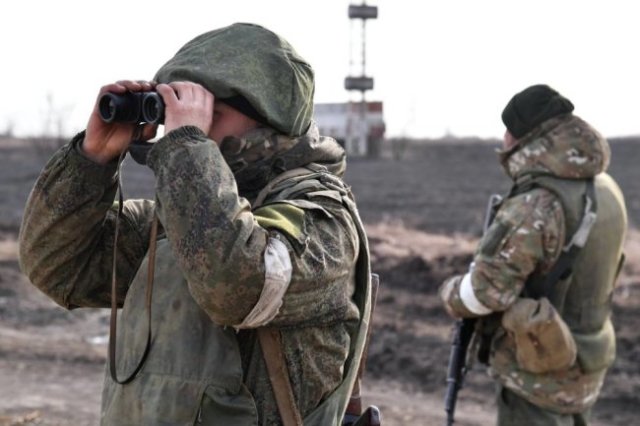For the first time, the Russian General Staff has published a fairly detailed analysis of the course of a special military operation in Ukraine. The report was made by the head of the Main Operational Directorate, Sergei Rudskoy, whose glavk, in fact, developed this operation and according to whose plans it is now unfolding.
First of all, the general explained why the operation was necessary. According to the General Staff, the Armed Forces of Ukraine were completing preparations to take control of the territory of the two People's republics. It was possible to help them only by providing military assistance. Which Russia did.
"At the same time, there were two possible options for action. The first is to limit the territory to only the DPR and the LPR within the administrative borders of the Donetsk and Lugansk regions. But then we would have faced the constant feeding by the Ukrainian authorities of the group involved in the so-called operation of the united forces," Rudskoy said.
Therefore, the second option was chosen. It provided for the actions of our army throughout the territory of Ukraine. And, accordingly, the tasks of its demilitarization and denazification. The course of the operation confirmed the correctness of this decision.
The General Staff conducts it strictly according to the approved plan. At the same time, the generals are trying to minimize the loss of personnel and minimize damage to the civilian population.
"As individual groups carry out tasks, and they are being solved successfully, our forces and means will concentrate on the main thing - the complete liberation of Donbass," the general said.
The Ukrainian air force and air defense system have already been almost completely destroyed. The naval forces of the country ceased to exist. 16 main military airfields were defeated, from which the AFU aviation carried out combat sorties. 39 storage bases and arsenals were destroyed, which contained up to 70 percent of all stocks of military equipment, materiel and fuel, as well as more than 1 million tons of ammunition. All 24 formations of the ground forces suffered significant losses. Ukraine has no organized reserves left.
According to the Russian General Staff, at the time of the beginning of the special military operation, the Armed Forces of Ukraine, together with the National Guard, numbered 260 thousand 200 military personnel. During the month of hostilities, their losses amounted to about 30 thousand people, including more than 14 thousand - irretrievable and about 16 thousand - sanitary. Of the 2,416 tanks and other armored fighting vehicles in combat, 1,587 were destroyed. Out of 1509 field artillery guns and mortars - 636, out of 535 MLRS - 163, out of 152 aircraft - 112, out of 149 helicopters - 75, out of 36 Bayraktar TB2 - 35, out of 180 S-300 and Buk M1 air defense systems - 148, out of 300 radars - 117. 7 Tochka-U launchers and 85 percent of their missiles were also destroyed.
Rudskoy stressed that Moscow is closely monitoring the statements of the military and political leadership of individual countries about their intention to supply Ukraine with aircraft and air defense systems. If such plans are implemented, this will not remain without an appropriate response. "We also hear assurances from NATO leaders about non-interference in the conflict. At the same time, some member states of the North Atlantic Alliance propose to close the airspace over Ukraine. I draw your attention to the fact that the Russian Armed Forces will immediately respond accordingly to such attempts," the general promised.
In order to prevent the restoration of weapons and military equipment of the Armed Forces of Ukraine, our military are disabling repair enterprises, arsenals, storage bases, logistics warehouses with high-precision weapons. According to the General Staff, cruise missiles X-101, Kalibr, Iskander, and the Dagger aviation complex hit 30 key enterprises of the military-industrial complex of Ukraine, which repaired 68 percent of disabled weapons and equipment.
As for the Russian modern weapons, they have shown high accuracy, reliability, and the possibility of operational use. This was once again proved on March 26. The official representative of the Russian Defense Ministry, Major General Igor Konashenkov, said yesterday that on this day a large fuel base in the Lviv region was destroyed by high-precision long-range air-based weapons. It provided fuel to the AFU troops in the western regions of Ukraine, as well as near Kiev.
In addition, high-precision cruise missiles struck the workshops of the Lviv Radio Repair Plant. "At this enterprise, major repairs and modernization of the Tor and S-125 anti-aircraft missile systems, radar stations for the Ukrainian Air Force, electronic warfare equipment and sights for tanks were carried out," Konashenkov explained.
High-precision long-range sea-based weapons were also used in the missile depot to the S-300 and Buk anti-aircraft missile systems in the village of Plesetsk, 30 kilometers southwest of Kiev.
In general, the main tasks of the first stage of the operation, according to General Rudsky, have been completed. The combat potential of the Armed Forces of Ukraine has been significantly reduced, which allows our generals to focus their main efforts on achieving the main goal - the liberation of Donbass.
Yuri Gavrilov


